Do you have a question about the Celestron PowerSeeker 70EQ and is the answer not in the manual?
Essential safety precautions for telescope use, including eye protection and supervision.
Instructions for extending and stabilizing the telescope tripod for a secure base.
Step-by-step guide for mounting the equatorial head onto the tripod.
Procedure for attaching counterweights to balance the telescope mount.
How to connect slow-motion control cables for precise adjustments.
Mounting the telescope optical tube onto the equatorial mount using rings.
How to insert the diagonal and eyepiece into the refractor focuser.
Inserting eyepieces into the focuser of a Newtonian telescope.
Attaching the finderscope bracket and the finderscope itself.
Method for aligning the finderscope with the main telescope optics.
How to use the Barlow lens to increase magnification.
Techniques for manually slewing the telescope across the sky.
Balancing the telescope on the Right Ascension axis for smooth movement.
Balancing the telescope on the Declination axis for stability.
General adjustment of the equatorial mount for polar alignment.
Setting the altitude of the mount to match local latitude.
Explains how images appear depending on telescope and eyepiece configuration.
How to adjust the focuser knob to achieve a sharp image.
Formula and method for determining telescope magnification.
Calculating the visible angular area of the sky through the eyepiece.
Tips for optimal viewing conditions and avoiding common mistakes.
Introduction to R.A. and Declination for locating celestial objects.
Explains the apparent movement of stars due to Earth's rotation.
Using latitude to align the telescope's polar axis towards celestial north/south.
Method for aligning the telescope using Polaris as a guide.
Identifying the North Celestial Pole using star patterns like the Big Dipper.
Process for polar alignment in the southern celestial hemisphere.
Method for aligning the telescope using Sigma Octantis in the south.
Using star patterns to locate the South Celestial Pole.
How to calibrate and use the telescope's setting circles for object location.
Step-by-step instructions for installing the optional motor drive.
How to power, adjust speed, and test the motor drive for accurate tracking.
Tips for observing the Moon, including optimal phases and using filters.
Specific advice for enhancing lunar observation with filters.
Guidance on observing planets like Venus, Mars, Jupiter, and Saturn.
Recommendations for improving planetary viewing, considering atmospheric conditions.
Essential safety precautions and methods for observing the Sun.
Viewing star clusters, nebulae, galaxies, and best viewing locations.
Factors affecting image quality: transparency, illumination, and atmospheric seeing.
Clarity of the atmosphere and its impact on visibility.
Effect of moonlight and light pollution on observing deep-sky objects.
Atmospheric stability and its influence on image sharpness and detail.
Introduction to imaging celestial objects directly through the telescope.
Capturing wide-field shots of constellations or nebulae with a camera on the mount.
Using specialized cameras for high-quality planetary and lunar imaging.
Utilizing CCD cameras for detailed deep-sky astrophotography.
Adapting the telescope as a telephoto lens for land-based photography.
Proper methods for cleaning telescope lenses and mirrors to avoid damage.
Adjusting optical elements for optimal image quality in Newtonian reflectors.
Step-by-step procedure for aligning the secondary mirror in Newtonian telescopes.
Adjusting the primary mirror to achieve proper optical alignment.
Using stars for precise collimation adjustments during nighttime observation.
Essential safety precautions for telescope use, including eye protection and supervision.
Instructions for extending and stabilizing the telescope tripod for a secure base.
Step-by-step guide for mounting the equatorial head onto the tripod.
Procedure for attaching counterweights to balance the telescope mount.
How to connect slow-motion control cables for precise adjustments.
Mounting the telescope optical tube onto the equatorial mount using rings.
How to insert the diagonal and eyepiece into the refractor focuser.
Inserting eyepieces into the focuser of a Newtonian telescope.
Attaching the finderscope bracket and the finderscope itself.
Method for aligning the finderscope with the main telescope optics.
How to use the Barlow lens to increase magnification.
Techniques for manually slewing the telescope across the sky.
Balancing the telescope on the Right Ascension axis for smooth movement.
Balancing the telescope on the Declination axis for stability.
General adjustment of the equatorial mount for polar alignment.
Setting the altitude of the mount to match local latitude.
Explains how images appear depending on telescope and eyepiece configuration.
How to adjust the focuser knob to achieve a sharp image.
Formula and method for determining telescope magnification.
Calculating the visible angular area of the sky through the eyepiece.
Tips for optimal viewing conditions and avoiding common mistakes.
Introduction to R.A. and Declination for locating celestial objects.
Explains the apparent movement of stars due to Earth's rotation.
Using latitude to align the telescope's polar axis towards celestial north/south.
Method for aligning the telescope using Polaris as a guide.
Identifying the North Celestial Pole using star patterns like the Big Dipper.
Process for polar alignment in the southern celestial hemisphere.
Method for aligning the telescope using Sigma Octantis in the south.
Using star patterns to locate the South Celestial Pole.
How to calibrate and use the telescope's setting circles for object location.
Step-by-step instructions for installing the optional motor drive.
How to power, adjust speed, and test the motor drive for accurate tracking.
Tips for observing the Moon, including optimal phases and using filters.
Specific advice for enhancing lunar observation with filters.
Guidance on observing planets like Venus, Mars, Jupiter, and Saturn.
Recommendations for improving planetary viewing, considering atmospheric conditions.
Essential safety precautions and methods for observing the Sun.
Viewing star clusters, nebulae, galaxies, and best viewing locations.
Factors affecting image quality: transparency, illumination, and atmospheric seeing.
Clarity of the atmosphere and its impact on visibility.
Effect of moonlight and light pollution on observing deep-sky objects.
Atmospheric stability and its influence on image sharpness and detail.
Introduction to imaging celestial objects directly through the telescope.
Capturing wide-field shots of constellations or nebulae with a camera on the mount.
Using specialized cameras for high-quality planetary and lunar imaging.
Utilizing CCD cameras for detailed deep-sky astrophotography.
Adapting the telescope as a telephoto lens for land-based photography.
Proper methods for cleaning telescope lenses and mirrors to avoid damage.
Adjusting optical elements for optimal image quality in Newtonian reflectors.
Step-by-step procedure for aligning the secondary mirror in Newtonian telescopes.
Adjusting the primary mirror to achieve proper optical alignment.
Using stars for precise collimation adjustments during nighttime observation.
| Lens coating | Fully Multi Coated (FMC) |
|---|---|
| Magnification | 35 x |
| Fixed focal length | 700 mm |
| Primary mirror size | 70 mm |
| Maximum supported eyepiece diameter | 20 mm |
| Tripod material | Aluminum |
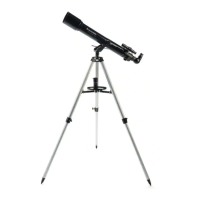



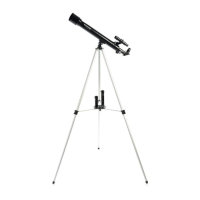

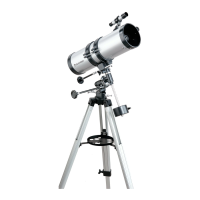
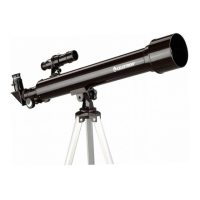
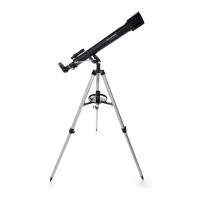
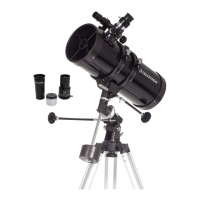

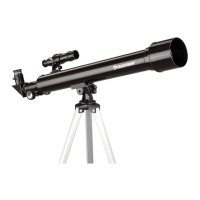
